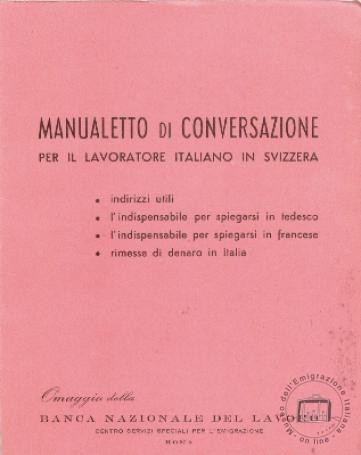Museum - On the road again
On the road again
After World War II, Italians started to leave again, with the help of interstate agreements-arms and intelligence in exchange for raw materials-to the countries of Europe and to Argentina and Australia. They still paid a heavy toll: in Marcinelle, Belgium, in August 1956, for example, a mine tragedy claimed 237 victims, 139 Italian
The flow stopped in the 1970s. The Foreign Ministry calculated that, in 1994, the number of Italian oriundi in the world exceeded 58 million: another Italy outside Italy. The economic difficulties that our country is currently going through has given new impetus to the decision to leave: they are mainly young people, often with degrees, who seek better work and life opportunities abroad, retracing, in a different way and with a different spirit, the footsteps of their fathers and grandfathers.
Today: "the others"
Emigration scholars estimate at 26 million the number of Italians who left Italy from 1871 to 1971. In that year, in fact, the flow of migration changed direction, beginning a new chapter in Italian history: from a country of emigration to a country of immigration. This exodus raised concerns about the future, magnified by the economic crisis, and gave rise to attitudes of rejection and intolerance. Fears that cannot be shared, but are understandable.
It is therefore important to look back and search history for analogies to what is happening.
Yesterday's situations are replayed: the barges in the Mediterranean today, were yesterday the crowded third-class decks of ships; the smugglers, the wicked recruiters who a hundred years ago embarked emigrants on unsafe ships for crossings that often ended in shipwrecks; the labor procurers, nothing more than the agents of criminal organizations that "sold" emigrants to unscrupulous entrepreneurs.
The comparisons are endless, the outcomes, often tragic, identical.
It is necessary to evaluate, remembering the work and commitment of our emigrants, the positive contribution made to the host nation. In an Italy with a high coefficient of aging, the contribution of immigrants becomes a support to demographic and economic development. They already contribute to the country's GDP in a substantial way. They make up for labor shortages, in family and personal care, agriculture, construction, services. Even in the pension sector they provide important help to the Inps budget with social security contributions. Increasingly present in self-employment, they also stand out for the vitality they impart to the Italian production and employment system.
In light of yesterday's history, one can try to read today's migration with different eyes.
Today: we
Italy is still a country of emigration, as revealed by the Migrantes Foundation's "Italians in the World 2022" Report, presented Tuesday, Nov. 8, 2022, in Rome.
In recent years, characterized by travel restrictions due to Covid, the community of Italian citizens officially registered with AIRE, the Registry of Italians residing abroad, has outnumbered the population of foreigners regularly residing in the country.
Among those residing abroad, the youth component is considerable.
The current Italian community abroad consists of more than 841 thousand minors (14.5% of the total number of compatriots registered with AIRE) a great many of whom were born abroad, but many others left in the wake of their families in recent years.
To the minors must be added the more than 1.2 million young people between the ages of 18 and 34 (21.8% of the total AIRE population, which comes to account for about 42% of the total annual expatriate-only departures).
Then there are the "young adults" (23.2% are between 35 and 49 years old). 19.4% are between 50 and 64 years old; 21% are over 65 years old, but of these 11.4% are over 75 years old.
"Leaving," recalled President of the Republic Sergio Mattarella, in a message sent at the presentation of the report, "are mainly young people - and among them young people with a high level of education - for reasons of study and work. They often do not return, with significant consequences on the social and cultural composition of our population." "The balance between those who enter and those who leave remains negative," the head of state added, "with obvious consequences on the demographic decline and with repercussions on our social life.







